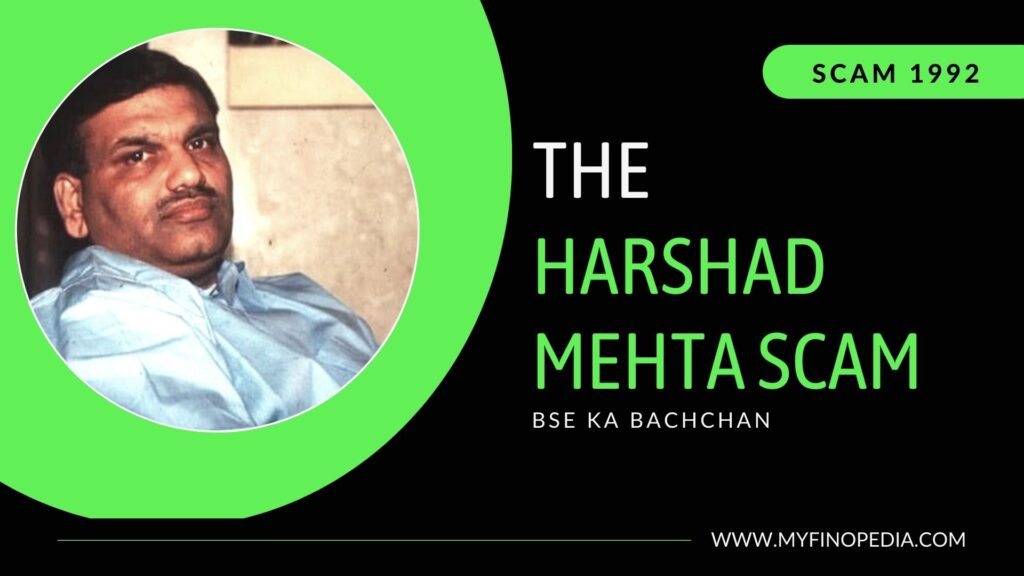In 1992, the Harshad Mehta scam wiped out more than a third of the market valuation and led to many changes made in the Indian stock market by the government.
Harshad Mehta’s $1.3 billion stock market manipulation paved the way for more robust, stricter, and intelligent market regulation. He convinced banks to transfer funds to his personal account during a period when banks were not permitted to invest in the market. He used it to purchase large quantities of stock, drive up the price, and cash out. It triggered a massive but illusory stock market rally.
How did the Harshad Mehta scam take place?
Harshad Mehta recognized the RF deals’ reliance on BRs early on. Furthermore, the RF deal system was highly dependent on well-known brokers such as Harshad Mehta. Through his involvement with the Bank of Karad (BOK) and Metropolitan Co-operative Bank, Harshad Mehta was able to create BRs (MCB). He forged BRs for a number of Indian financial institutions with the assistance of these two banks.
There were no securities backing the forged BRs. This meant they were basically worthless. This is similar to obtaining loans with no collateral. Then Harshad Mehta used this fund to inflate stock prices to increase his influence.
Audits and a critical examination of the bank’s investment by the RBI revealed that the amount represented by BRs in circulation was substantially greater than the amount represented by government bonds actually held by banks.
Another method of eliminating collateral was to forge government bonds themselves. The BRs are omitted in this case, and fake government bonds are issued instead. This is due to the fact that PSU bonds are represented by allotment letters, making them easier to forge.
How did Harshad Mehta’s scam get exposed?
On April 23, 1992, Sucheta Dalal exposed the scam in the columns of The Times of India. She was particularly attracted to Harshad Mehta’s fleet of cars. The Toyota Corolla, Lexus Starlet, and Toyota Sera were among them.
The stock market had already lost a trillion rupees less than two months after the scam was exposed. According to the Janakiraman Committee Report, the scam was worth Rs. 4025 crore. This had a huge impact on the stock market given that the scam was only worth 4025 crores in comparison to a trillion or 1 lakh crores.
To ensure that all parties involved are brought to justice, the government prohibited the sale of any shares purchased through brokers in the previous year. This impacted not only the brokers, but also the innocent shareholders who may have purchased securities through these brokers.
Changes happened after the Harshad Mehta scam.
The SEBI Act was passed, granting it authority over all securities markets and effectively putting an end to the independent stock exchanges owned and operated by brokers. The scam was achieved by the information asymmetry of the physical trade, in which brokers wielded tremendous influence. For example, trade reconciliation took time, and prices could have changed by then. Because the system was so slow, brokers were able to trade without stocks. As a result, the NSE was established, and e-trading was introduced.






